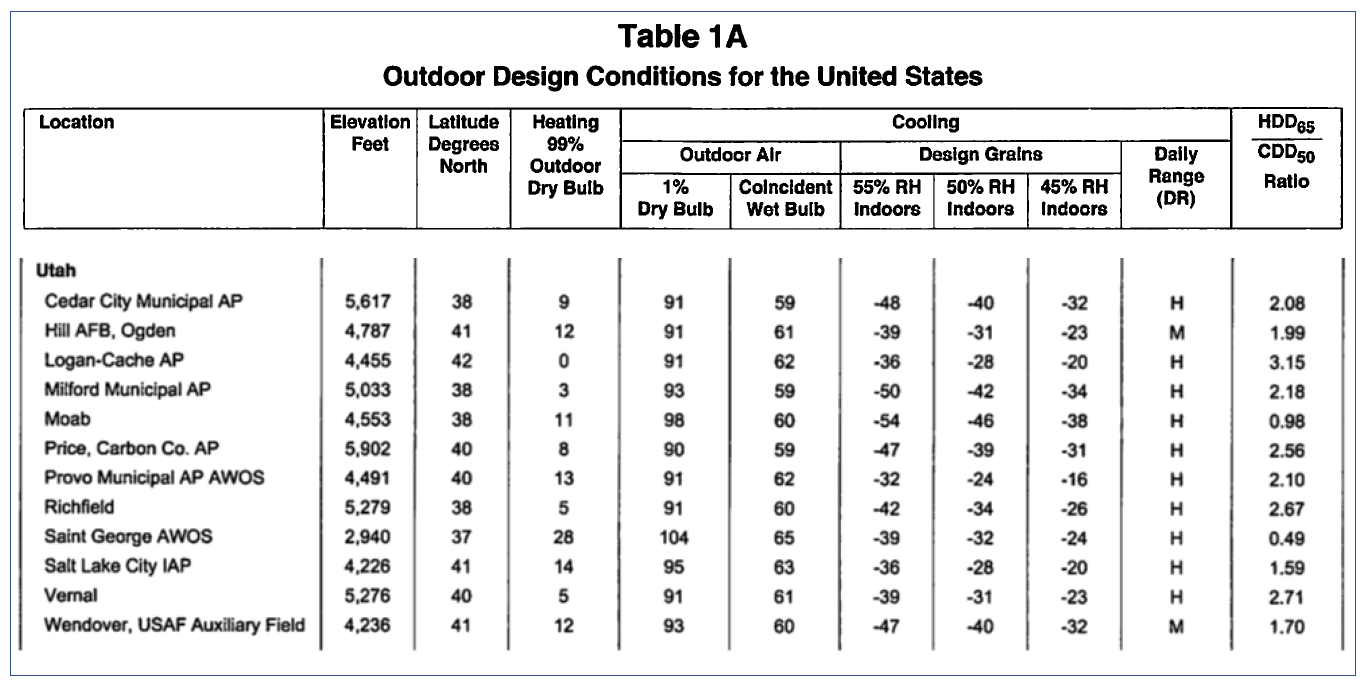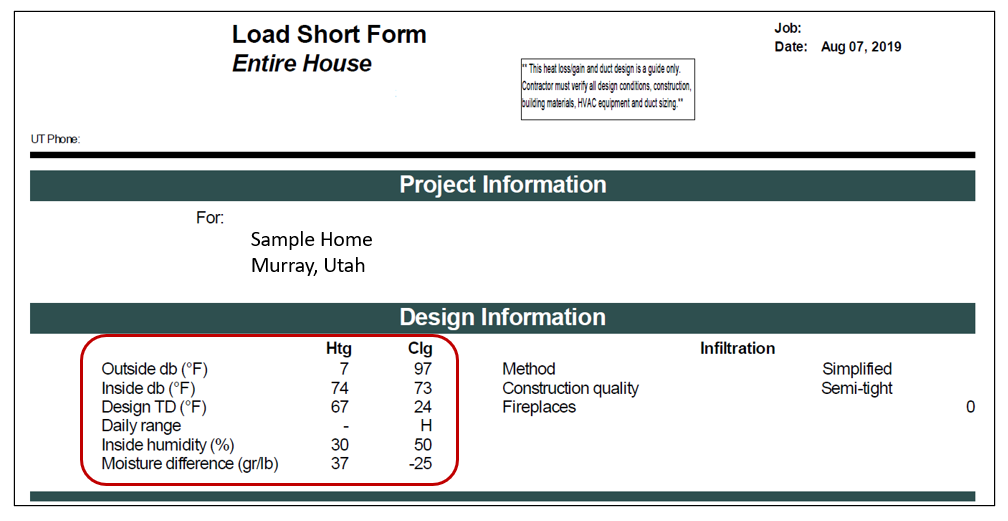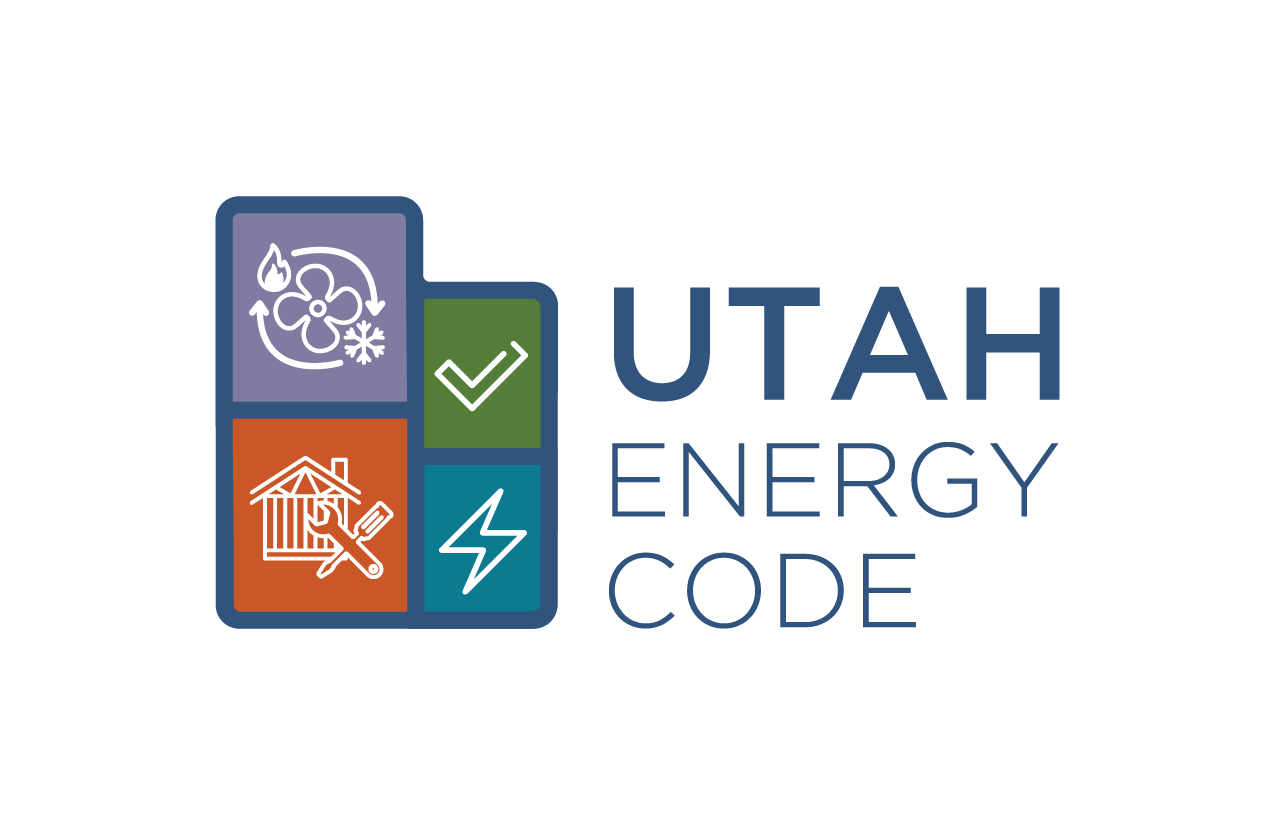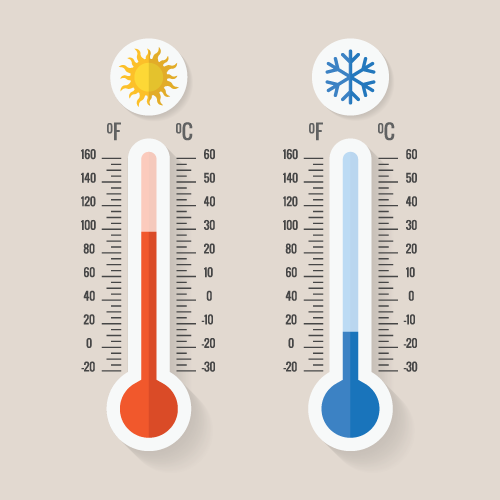Part 2: Manual J Design Conditions
In Part one, we introduced a series of discussions on load calculation, duct design, and equipment selection. In this 2nd Part, we will discuss design conditions, opening with a review of several words and terms, as identified in Manual J. Please refer to the design conditions for Utah provided below from Manual J Table 1A.
Design Conditions – A set of conditions directly affecting the transfer of heat into or out of a residential building. Includes: indoor and outside temperatures, location and orientation of structure, daily temperature range, and relative humidity (inside and outside).
Elevation – Altitude directly effects air density. Thinner lower density air at higher altitudes transports less heat per CFM than air at or near sea level.
Latitude – The location on the earth, specifically the latitude affects the solar azimuth, affecting the solar gain through glass and the impact of overhangs, especially for SE, SW, and South glass. The latitude has little effect on east and west glass, which experience high summer gains in virtually all locations.
Winter: 99% Dry-Bulb – The winter outdoor dry bulb temperature at which your location will stay above for 99% of all the hours in the year, based on a 30-year average. Turning it around, the outdoor air in the location you are considering will be colder than this temperature for only 1% of the hours in an average year. That happens to be about 88 hours per year. In Salt Lake City, at the International Airport, the 99% winter design temperature is 14° F.
Summer: 1% Dry-Bulb – The location will experience temperatures higher than this number only 1% of the hours in a year, again, based on a 30-year average. In Salt Lake City, at the IAP, the number is 95° F. We see temperatures above that for only about 88 hours in an average year, based on the past thirty years.
Summer Coincident Wet-Bulb – Not used directly in the Manual J load calculation, rather used in Manual S Equipment Selection; however, wet-bulb temperatures have been used in determining the grains of moisture, identifying if the climate is humid or dry.
Design Grains – Moisture content in air is expressed in grains of water per pound of air. A grain of water is approximately 1/7000 of a pound or 0.000143 pounds of water. The design grains values in Manual J Tables are used to determine the latent load generated through infiltration and ventilation. Negative numbers indicate the outside air is drier than the indicated Design Relative Humidity.
Daily Range – An indication of the average summer daily high and low temperatures for the location. Utah locations generally fall into the High Daily Range.

Obviously, this Manual J Table is lacking in the number of locations, providing only general direction. It is up to the HVAC contractor, HVAC system designer, general contractor, and the Building Official from the jurisdiction/city where the home will be built, to determine the design conditions for the specific project location. Data for all Counties in Utah and other states is found on the Energy Star website.
Common sense should apply…. Consider the Salt Lake Valley; where, as I am writing this, we just experienced a record 107⁰F temperature on June 15, 2021, a record temperature for any summer day. This is of course 12 degrees hotter than the Manual J 1% Dry-Bulb value listed. Considering winter conditions, my home in South Jordan is typically 4 to 6⁰ F colder than the airport. We experience frost 4 or 5 times before the first frost at the airport. The Airport is probably the poorest representative location for the Valley, as the Great Salt Lake moderates both the summer highs and winter lows. I consider 98⁰ F summer and 10⁰F winter, reasonable design temperatures for South Jordan. Other parts of the valley may experience greater or lesser extremes. The Provo Airport, close to Utah Lake likewise will experience milder temperatures at both ends of the spectrum, when compared with other areas in Utah County.
Please consider the following when selecting design conditions:
- The location identified on the plan should be reasonably close to the actual location, ensure correct altitude and latitude information is used within the software.
- After completing a Load, a contractor does not order a furnace or AC which is exactly sized for the load. They select the next larger size, which gives an oversize factor, often as much as 20-25%, sometime more. Example: A heat loss calculation identifies a 21,326 BTU/hour winter heat loss at design conditions. The contractor does not order a 21,326 BTU/hour furnace, rather a 40,000 95% efficient furnace, providing sufficient capacity for rare extreme cold temperatures.
- Selecting design temperatures at record highs and lows results in gross oversizing.
- Design temperatures are based on a 30-year average. As it appears historical temperatures are on the rise, a slight adjustment is acceptable.
- Do not be completely ridiculous- I reviewed a load where the HVAC contractor submitted a load for Midway, with a summer OD design of 107⁰, 8⁰ degrees higher than the all-time high in that mountain community. The current 1% design temperature based on historical data is 84⁰F for Summit County.
- Also important is the selection of reasonable inside design conditions. Manual J suggests 70⁰F for winter and 75⁰F for summer. Exaggerating the summer inside temperature to 67⁰, is the same as adding 8⁰ to the outside temperature.
- If there is a reasonable argument for higher indoor winter and lower indoor summer design temperatures, this should be justified in writing when submitting to the city. I consider a 78⁰ F winter inside temperature is justified for senior housing, and perhaps a 70⁰F summer temperature for a good friend with MS, who is not comfortable unless it is quite cool. Please be aware, residential comfort cooling to below 70⁰F is rarely reasonable and will require advanced design procedures and controls.
- Equally important is ensuring the R-values, U-factors and air infiltration rates used in the load calculation match the actual construction of the home. More on this in a future discussion.
- Building officials, please be careful in demanding tight adherence to a specific design temperature. A few degrees higher and lower simply does not change the load appreciably. Requiring a recalculation and re-submittal over a small change delays, adds unnecessary expense and often creates an adversarial situation.
- As for the moisture conditions, ALL loads in Utah should be designed at 45% RH Indoors, with a negative (-) Design Grains number close to those listed in Table 1A. If a first glance at a load shows positive grains, it is wrong and must be rejected.
- Be cautious in blaming the code for a system which does not cool as expected. There are numerous other factors which may prevent the installed system from operating at full capacity.
- Manual J software packages typically include design conditions on the front sheet of reports.

Remember, the output of a load calculation software package is only as accurate as the data inputted- garbage in = garbage out. For additional technical information, consider spending a little time studying Manual J.
Thanks for your questions on this subject and others. Your comments and questions are welcome.
Brent Ursenbach
[email protected]

